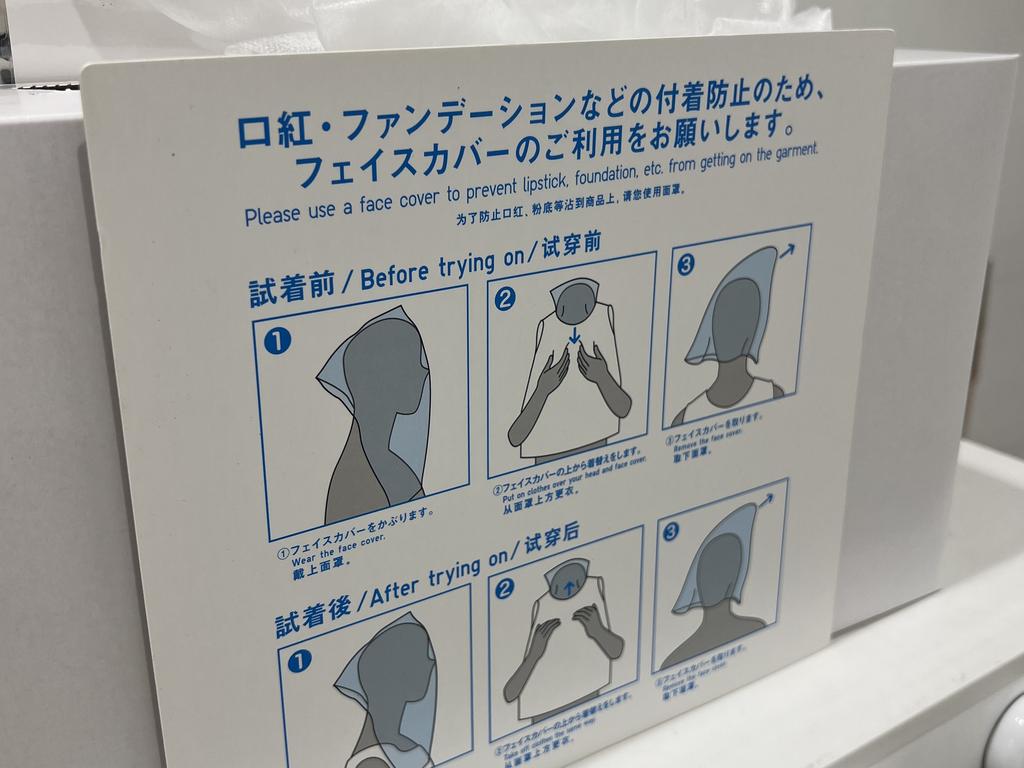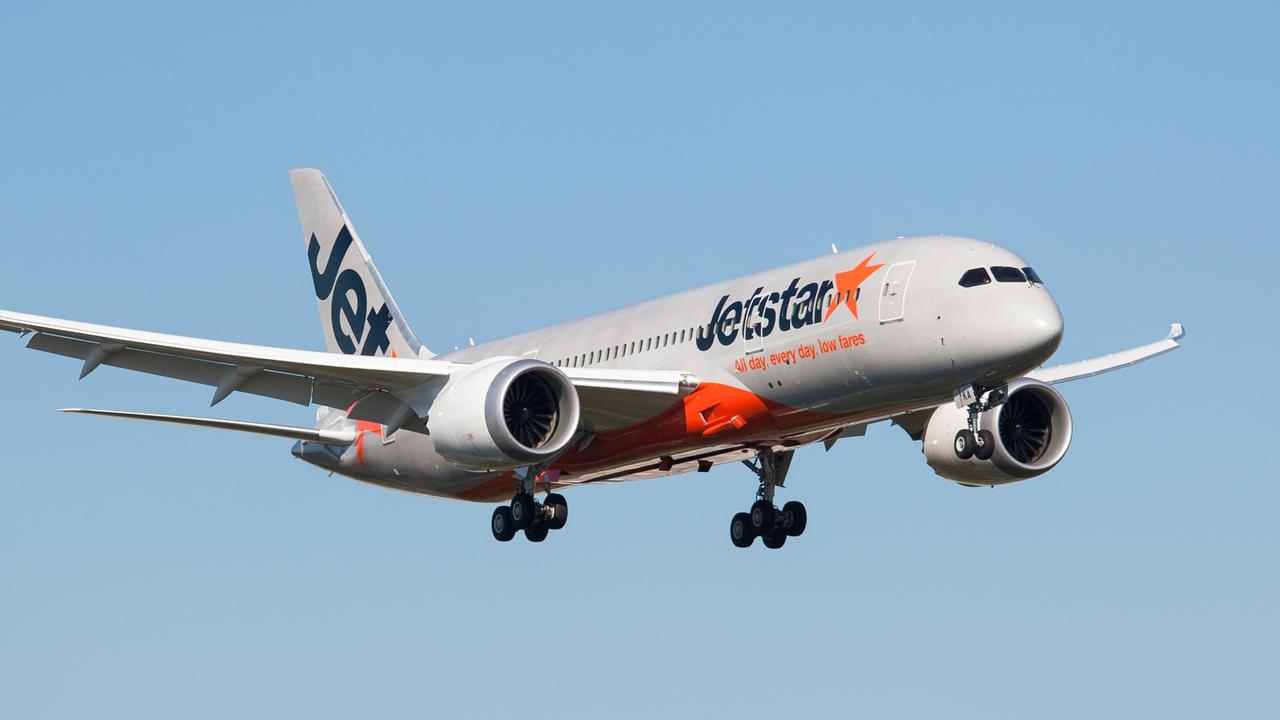Pictures reveal Aussie tourist’s shock at cost of food and alcohol in Japan
The cost of this huge meal and the prices listed in a supermarket shelf are part of the reason this nation is so hot right now.
Five plates of sushi, one bowl of miso soup, soy sauce flavoured fries and a complimentary green tea.
Total price? 968 Japanese yen or about 10 Australian dollars.
After travelling in Japan for a week, I had got used to the cost of dining out being significantly cheaper than in Australia.
But I still couldn’t quite believe my eyes when tapping away on the tablet to order at Hamasushi, a popular chain of conveyor belt sushi restaurants.
Clearly excited, I accidentally ordered the same thing twice.
I initially thought I must have calculated the currency conversion wrong in my head or there was another charge to expect at the end – but no, most plates of sushi were in fact only about $1 or so, including tax.
As a big fan of sushi, I knew that in Australia the cheapest plates on a sushi train are about $5.
No wonder you had to take a ticket to wait in a virtual line just to get a seat for dinner here.

You know what else you can get for just over $1 in Japan? An alcoholic drink.
A picture from my camera roll of the drink fridge at a supermarket reveals 350ml cans of Suntory -196 for just 129.80 yen, including tax.
It costs eight times that (about $10) for one 330ml can of the popular Japanese premix at a bottle shop in Australia.
A six-pack of 500ml Asahi cans was priced at about $13 (or $2 each) compared to $27 (or $7 each) at home.


At a Japanese liquor store, a 700ml bottle of Suntory Sui gin cost $14 compared to $90 in Australia.
Even foreign alcohol was cheaper, with a 700ml bottle of Aperol costing $15 – more than half of what it costs in Australia.
(While the costs are low, it’s important to drink responsibly).

I understand why Expedia Group has listed “Goods Getaways” as a travel trend to watch in 2025, with a survey revealing 39 per cent of travellers visit supermarkets when they are away and 44 per cent seek out local items they can’t find at home. The growing trend is believed to be driven by Gen Z and TikTok.
Supporting this trend, a trip to Japan is not complete without a visit (or many) to the convenience store, which are often described as “next level” compared to those we have in Australia or other countries around the world.
Located on almost every street corner and generally open 24/7, you can pick up hot food, sushi, ice creams, chips, lollies and other sweets for a couple of dollars. There are plenty of flavours you would never find in Australia making the experience even more of a novelty.
If 7-Eleven Australia were to steal one product from 7-Eleven Japan, I would want it to be the real fruit smoothies.
At some stores in Japan you can purchase a cup of frozen fruit and yoghurt cubes for about $3, and mix it in the store’s smoothie machine.
I’m not the only Aussie who loves the idea. One tourist’s TikTok of the smoothie has been liked by 2.5 million people.
Japanese-owned giant 7-Eleven International completed its acquisition of 7-Eleven Australia earlier this year and have flagged big changes are on the cards so I’ll have my fingers crossed.
However, don’t be fooled into thinking everything is cheaper in Japan. I spotted a block of Lindt chocolate in a supermarket for almost $10.
As most would expect, it is cheaper to stick with Japanese brands and cuisine – plus it is a more authentic travel experience.
Cooking my own okonomiyaki at a barbecue at our restaurant table was a highlight, as well as visiting family-run establishments that feel more like you are dining in someone’s home.
At a traditional restaurant, be prepared to take your shoes off. Japan is not the place to wear bad socks, as they will be exposed.


Tax-free shopping: How tourists can get discounts in Japan
I found food and drink to be the standout when it came to scoring a bargain in Japan, but the shopping can be good too.
Famous discount store chain Don Quijote – known as the place to stock up on cheap Japanese skin care and hair care going viral on TikTok – is an experience in itself.
The Don Quijote in Dotonbori, Osaka is six floors, has a ferris wheel, and its own jingle and music video by Bruno Mars. It took our group a decent amount of time just to locate a bottle of water in there.
The discount store sells everything from snacks and cosmetics to pharmaceuticals and home appliances.
As for clothes shopping, the change room experience at retail stores in Japan is unique. You will need to take your shoes off and wear a face cover to not dirty the clothes.

If you are doing some shopping, take advantage of the tax exemption for foreign tourists when you spend over 5000 JPY (excluding the tax) in one transaction.
Many stores have signs advertising tax-free goods and will happily help you with the process. The most straight forward way to get the discount on your purchases is when a shop assistant scans your passport with your entry sticker and fills out some paperwork. They then take the tax off before you pay. Alternatively, you will need to go to a separate tax-free counter to get a tax refund after you have paid.
Consumable goods like food and cosmetics are put in a dedicated bag and can’t be opened until you leave the country.
When you do leave the country, there is a point at the airport where you must scan your passport if you have purchased tax-free goods. If the goods are in your checked luggage, passengers are instructed to notify the airline at check-in.
Australians taking advantage of a strong dollar
In the first six months of this year, about 462,000 Australians visited Japan – a big jump on the 327,000 that visited pre-pandemic in the first six months of 2019, according to data from the Japan National Tourism Organisation.
Australian budget airline Jetstar told news.com.au the number of people who have travelled or have booked travel to Japan with the airline this year has almost doubled compared to last year.

One factor causing Japan’s popularity to surge among Australian travellers is the dollar being strong against the Japanese yen.
Travel Money Group general manager Scott McCullough explained: “We’ve essentially seen an AUD for 100 yen match when exchanging currency.”
There was even a period mid year where the Australian dollar was outperforming the yen.
“Currently 1 AUD is buying roughly 97 yen. Compare this to five years ago where 1 AUD was buying around 74 yen, and you’ll see why it’s such a great time to take advantage of the exchange rate and head to Japan,” Mr McCullough said.
“To put this into context, if you were gearing up for snow season in 2019 and needed JP¥100,000, it would have cost you AU$1,250, but with today’s rates it’ll only cost you AU$1,031.
“To get the best deal, our advice is always to keep a close eye on exchange rates or talk to a foreign exchange expert so you can load your currency card or exchange cash when the yen is at its best.”
Flights from Australia to Japan from $249
Jetstar operates up to 25 flights a week to the country, flying direct to Osaka from Cairns, Brisbane and Sydney, and Tokyo from Cairns and Brisbane.
On Monday, the airline launched a five-day Japan sale starting at $249 one-way (excluding checked baggage).
The cheapest fares include Cairns to Osaka from $249, Cairns to Tokyo from $269, Brisbane to Osaka from $299, Brisbane to Tokyo from $319 and Sydney to Osaka from $329.
The sale ends 11.59pm AEDT on November 1, unless sold out prior. Travel dates vary per route but include late January to early September 2025, as well as limited seats in November this year.
Jetstar CEO Stephanie Tully recently told news.com.au the airline was expecting a “really busy” period of Aussies flying to Japan between December and March for the ski season.
She is keen to expand the destinations Jetstar can fly direct to.
“I’d love to be able to fly directly into Sapporo rather than go via Narita [Tokyo],” she said.
This writer travelled to Japan as a guest of Jetstar






